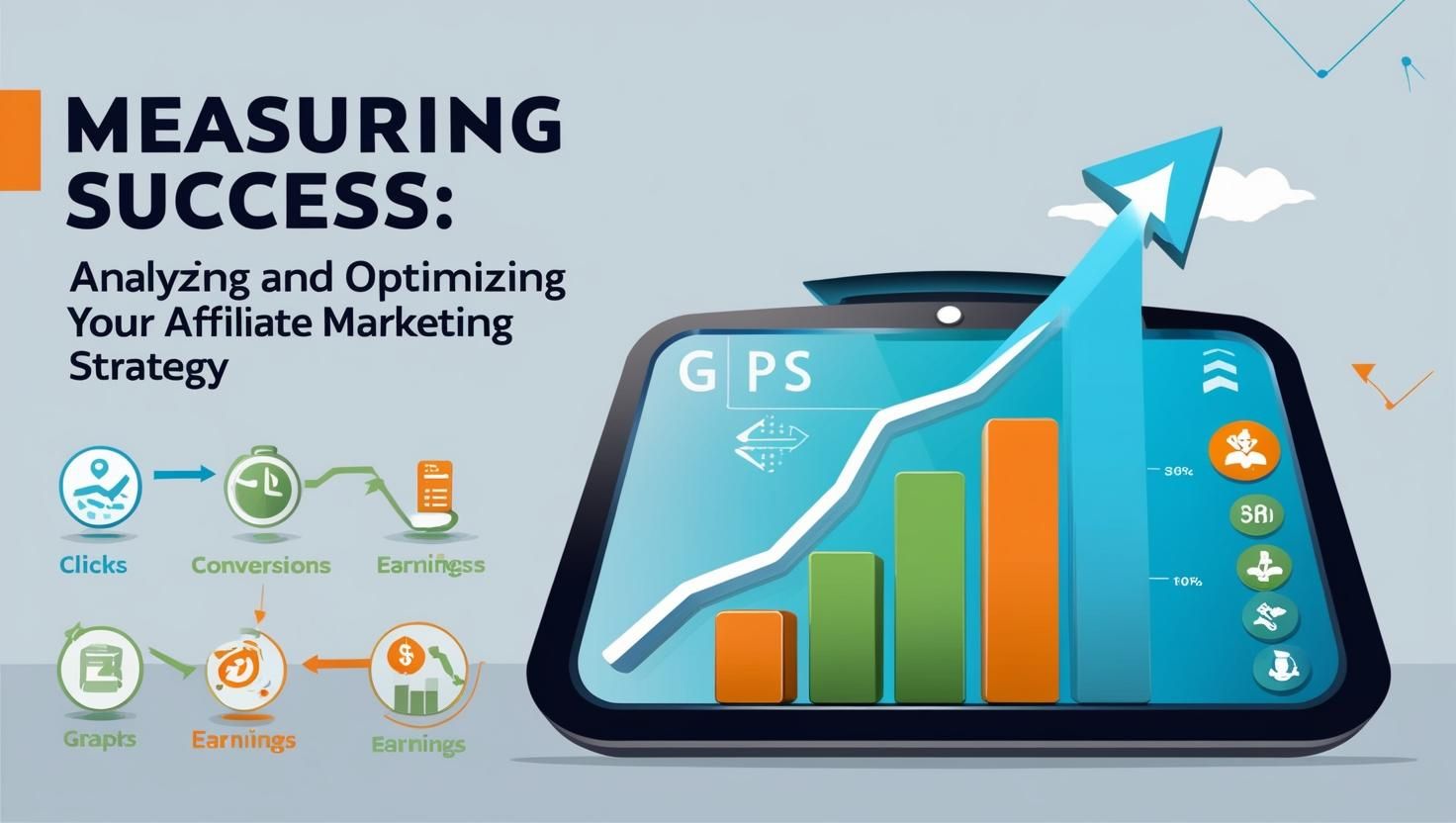Picture this: you’ve got a cool blog or YouTube channel, and you’re looking to make a bit of extra cash without the hassle of creating and selling your own products. Enter affiliate marketing—a pretty sweet deal where you earn a commission by promoting other people’s products. It’s like being paid for sharing things you genuinely like.

Affiliate marketing isn’t some flash-in-the-pan trend; it’s been around since the days when people first started using the web to buy stuff. It’s gone through quite the evolution, with its roots tracing back to the late 1990s when Amazon launched its famous affiliate program. That’s where it started getting folks interested in earning commissions from their websites.
The affiliate marketing ecosystem is like a well-oiled machine with several key players working together. You’ve got the merchant or product creator, the affiliate (you, hopefully), and the consumer. The merchant provides the product, the affiliate promotes it, and the consumer—ideally—buys it, earning you a cut of the sales.
Before you jump headfirst into this world, you gotta weigh the pros and cons. On the plus side, it’s a mostly passive income once you set everything up, and it doesn’t cost an arm and a leg to get started. But remember, the competition can be fierce, and success often depends on consistency and building trust with your audience.
Starting your journey with affiliate marketing is like stepping into an adventure that offers both excitement and challenges. It’s about sharing what you love, being genuine, and understanding how to navigate this ever-growing digital landscape. After all, when your audience trusts you, they’re more likely to follow your recommendations, turning your passion into some serious cash.
Setting Up for Success: Finding Your Niche and Audience
Zeroing in on a specific niche is like choosing your own adventure. It shapes your content, directs your marketing efforts, and speaks to a group of people who are genuinely interested in what you have to offer. Think of it as finding your tribe—folks with shared interests who appreciate your unique voice.
| Step | Description | Why It Matters |
|---|---|---|
| Finding Your Niche | Choose a specific niche that aligns with your passion and has profitability potential. | Helps you target a specific audience, stand out, and focus your content and marketing efforts. |
| Researching Profitability | Investigate market trends, gauge demand, and identify opportunities where your niche can generate income. | Ensures your chosen niche has earning potential and aligns with current consumer interests. |
| Understanding Your Audience | Dive into the likes, dislikes, and spending habits of your target audience to tailor your content and promotions to their preferences. | Creates content that resonates, building trust and engagement with your audience. |
| Analyzing Competition | Study competitors’ content, keywords, and strategies to identify gaps where you can offer something unique or better. | Helps you differentiate yourself and find areas where you can add more value than competitors. |
| Using SEO Tools | to discover valuable keywords, search trends, and opportunities within your niche. | Provides data-driven insights to guide your content strategy and boost visibility in search engines. |
When picking a niche, profitability is the name of the game. You want something you’re passionate about, sure, but also something that’ll bring in the dollars. Research is your best friend here. Check out current market trends, see what’s hot, and gauge demand.
Understanding your audience is crucial. Are they young sneakerheads always looking for the latest drop? Or maybe they’re stay-at-home parents hunting for life hacks. Dive into their likes, dislikes, and spending habits. Knowing your audience helps tailor your content and promotions to resonate with them.
Competition is another piece of the puzzle. Having rivals isn’t necessarily bad; it means there’s money to be made. Analyze what the big dogs in your niche are doing—check out their content, keywords, and affiliate programs. See where you can offer something fresher or more tailored.
SEO tools like Google Trends, Jaaxy or SEMrush are instrumental. They help you understand what people are searching for, which keywords are worth targeting, and where opportunities lie. With the right tools, you’ll have your finger on the pulse, guiding your content strategy and helping build that all-important audience connection.
Choosing the Right Affiliate Programs: Navigating the Options
Choosing an affiliate program is like picking teammates for a game. You want partners that match your energy and goals, and those who offer products you’re proud to stand behind. The affiliate landscape is vast, and not all programs are created equal.
| Step | Description | Why It Matters |
|---|---|---|
| Explore Available Programs | Research a range of affiliate programs, from niche-specific options to large platforms like Amazon Associates or ShareASale. | Provides a variety of choices to find the best fit for your goals and audience. |
| Evaluate Key Metrics | Check commission rates, payment schedules, tracking transparency, and ease of use. | Ensures the program offers fair rewards and clear reporting for your efforts. |
| Negotiate Commission Rates | Reach out to affiliate managers to discuss better commission rates if you bring significant traffic. | Potentially increases earnings and fosters stronger partnerships with affiliate programs. |
| Align with Your Niche | Choose programs that resonate with your niche and audience, supporting products you believe in. | Builds authenticity and trust, increasing the likelihood of successful conversions. |
| Focus on Authenticity | Recommend only products and services you genuinely support to maintain credibility with your audience. | Strengthens audience trust and encourages more organic engagement and purchases. |
To begin, explore the wide array of affiliate programs available out there. From high-paying and niche-specific programs to giants like Amazon Associates or ShareASale, there’s no shortage of choices. Each platform has its unique perks and requirements, so weigh them according to your needs.
Evaluation is key. When sizing up potential programs, check their commission rates, payment schedules, and ease of use. Look for transparency in tracking and reporting—knowing how your efforts translate into earnings is vital.
Don’t be shy to negotiate for better commission rates, especially if you bring significant traffic. A little chat with affiliate managers sometimes leads to better deals. After all, rewarding partnerships benefit both the affiliate and the merchant.
Always look for programs that align with your niche and resonate with your audience. Authenticity is valued more than ever, and supporting products and services you believe in helps build trust with your followers. If your recommendations are genuine, your audience is more likely to trust and make purchases.
Creating Quality Content: Engaging and Converting Your Audience
Crafting quality content is where the magic happens. This is your chance to show your audience why the products you’re promoting are worth their time and money. Think of your content as a conversation—one that informs, engages, and ultimately convinces your audience to make that purchase.
| Content Strategy | Description | Why It Matters |
|---|---|---|
| Craft Genuine Written Content | Focus on creating relatable, informative, and concise content, such as blog posts and reviews. Use storytelling to connect emotionally with your audience. | Builds trust and resonates with readers by addressing their questions or solving their problems. |
| Leverage Social Media | Utilize platforms like Instagram, TikTok, and Facebook to showcase product features visually. Engage with your audience by responding to comments and asking questions. | Expands your reach, boosts engagement, and creates a sense of community around your content. |
| Encourage User-Generated Content (UGC) | Invite satisfied customers to share reviews, testimonials, or product experiences. | Adds authenticity and credibility, as people trust peer recommendations more than promotional claims. |
| Implement SEO Techniques | Use well-placed keywords, clear structure, and engaging meta descriptions to optimize content for search engines. | Increases visibility, drives organic traffic, and improves the likelihood of reaching your audience. |
| Engage and Convert | Combine storytelling, interaction, and credibility to create a persuasive narrative that guides readers toward making a purchase. | Fosters trust, builds meaningful interactions, and drives higher conversion rates. |
When it comes to written content, everything from blog posts to reviews needs to be genuine, informative, and straight to the point. People are more likely to respond to content that feels relatable and answers their questions or solves their problems. Pro tip: use storytelling to connect emotionally with your audience.
Social media is a powerhouse for expanding your reach. Platforms like Instagram, TikTok, or Facebook are perfect for showcasing product features in a visually engaging way. Interact with your audience—respond to comments, ask questions, and create shares that boost engagement.
User-generated content (UGC) can be a game-changer. Encourage satisfied customers to share their experiences and reviews. Nothing beats the authenticity of a happy customer vouching for the quality of a product.
Don’t forget SEO techniques throughout your content creation process. Well-placed keywords, engaging meta descriptions, and a clear structure help get your content in front of potential customers. SEO is an ongoing process, but the results can significantly enhance visibility and organic traffic.
Bringing all these elements together turns content into a powerful tool. When your audience feels like they’re getting genuine advice or solutions, trust builds quickly, leading to meaningful interactions and boosting your conversion rates.
Measuring Success: Analyzing and Optimizing Your Strategy
Tracking your progress in affiliate marketing is essential to knowing what’s working and what needs a tweak. Think of it as a GPS for your affiliate journey, guiding you towards better outcomes.

Start with key performance indicators (KPIs). These metrics help you assess aspects like click-through rates, conversions, and overall revenue. Real numbers offer insights into whether you’re hitting your goals or if something’s off balance.
Having the right tools makes data analysis a breeze. Platforms like Google Analytics or affiliate-specific solutions like Voluum are great for monitoring trends and performance. They provide a clear picture of where your traffic originates and how it converts, crucial for refining your strategy.
Data is a goldmine for optimization. Dive into it to identify patterns and opportunities. Simple tweaks, like adjusting link placements or revising calls to action, can significantly impact results. Stay flexible—a strategy that’s adaptable to feedback and analytics stands a better chance of thriving.
The affiliate marketing landscape is always changing, so keeping your finger on the pulse is key. Follow industry trends, adapt to new tools, and always be ready to pivot. Staying informed ensures you stay competitive and relevant in a bustling marketplace.
Leave comments and questions below.


This is a fantastic overview of affiliate marketing for beginners! It’s clear, comprehensive, and really breaks down the process into manageable steps.
I particularly like the emphasis on authenticity and the reminder that success comes from building trust with your audience. My two cents: don’t underestimate the power of personal stories and experiences when promoting products. People connect with personal narratives, and it can really set your affiliate marketing apart.
Great job on the tutorial!
Hi Shaun, thanks for your comments. I agree about personal narratives.
Bob